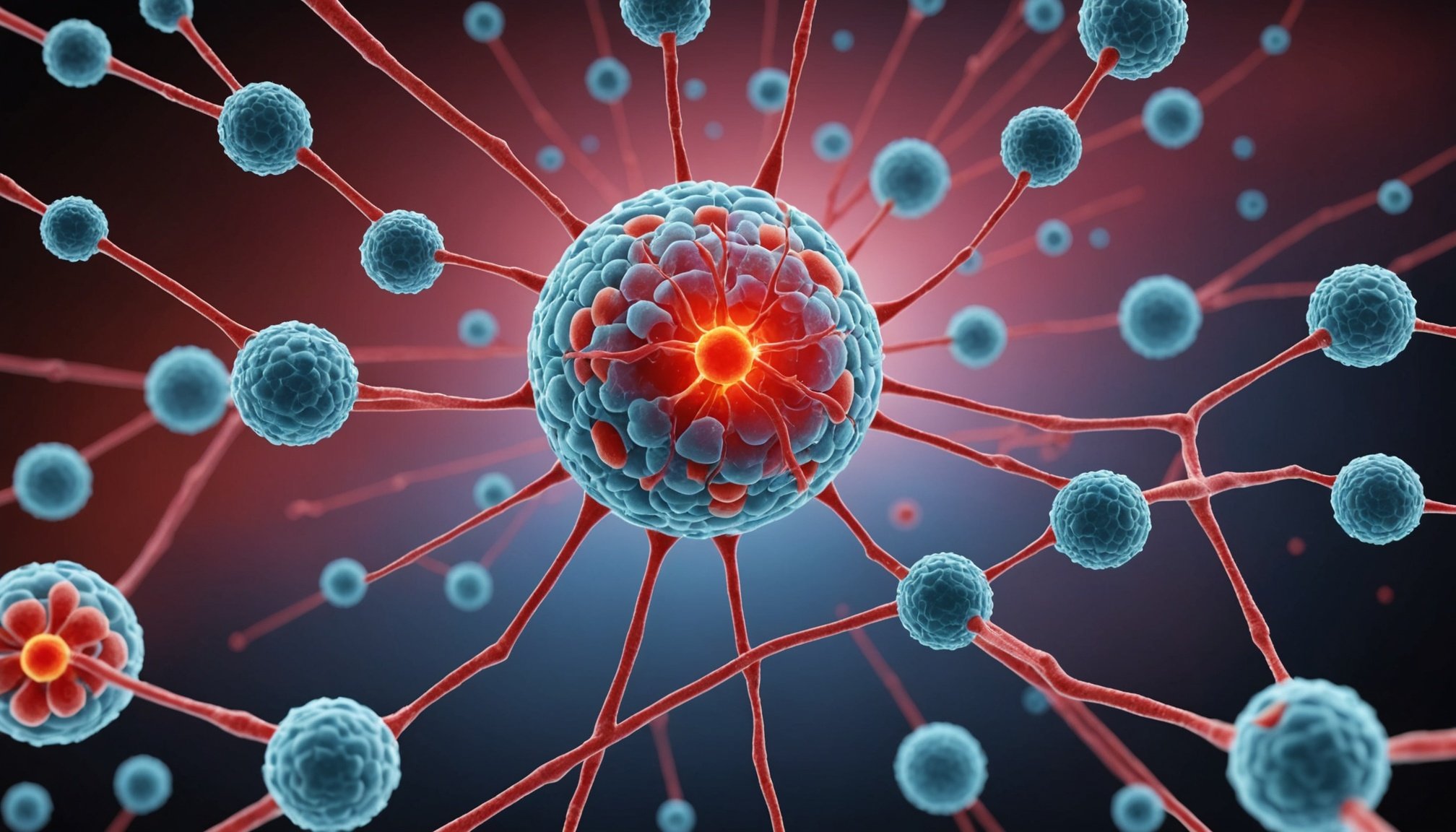Unlocking the Secrets of Peptide Therapy: The Most Recent Advances in Wound Healing Research
In the ever-evolving field of regenerative medicine, peptide therapy has emerged as a promising tool for enhancing wound healing, tissue repair, and overall health. This article delves into the latest advances in peptide therapy, exploring how these small chains of amino acids are revolutionizing the way we approach wound healing and tissue regeneration.
What are Peptides and How Do They Work?
Peptides are short chains of amino acids, the building blocks of proteins. These molecules play a crucial role in various biological processes, including cell signaling, tissue repair, and the regulation of growth factors. When it comes to wound healing, peptides interact with cells and the extracellular matrix (ECM) to stimulate a range of beneficial responses.
Have you seen this : Exploring the Mental Benefits of Progressive Muscle Relaxation for Individuals Living with Chronic Pain
Mechanism Behind Peptides
When peptides bind to receptors on the surface of cells, they trigger a cascade of biological responses. For instance, they can stimulate the production of growth factors, enhance collagen synthesis, promote angiogenesis (the formation of new blood vessels), and modulate inflammation and immune responses. This multifaceted interaction makes peptides a promising area of research for optimizing wound healing and tissue repair.
Specific Peptides for Wound Healing
Several peptides have been identified for their potent wound healing properties. Here are some of the most notable ones:
Topic to read : Exploring Cutting-Edge Stem Cell Innovations for Heart Tissue Regeneration: The Future of Cardiac Repair
BPC-157
BPC-157 (Body Protection Compound-157) is renowned for its regenerative properties. It promotes tissue repair, reduces inflammation, and enhances the healing of wounds. BPC-157 works by stimulating fibroblasts, the cells responsible for collagen production, thereby improving skin structure and elasticity over time.
Thymosin Beta-4
Thymosin Beta-4 is another peptide that has shown significant promise in wound healing. It boosts blood vessel formation, enhances collagen synthesis, and promotes the repair and regeneration of damaged tissues. This peptide is particularly effective in speeding up the healing process by facilitating the migration of cells to the wound site.
GHK-Cu (Copper Peptide)
GHK-Cu is a copper peptide that has been shown to improve skin elasticity, firmness, and reduce fine lines and wrinkles. It supports wound healing by enhancing collagen production and promoting the repair of UV-damaged skin. Clinical studies have highlighted the efficacy of GHK-Cu in improving skin health and vitality.
Benefits of Peptides in Wound Healing
Peptides offer several benefits that make them invaluable in the context of wound healing.
Enhanced Collagen Synthesis
Peptides such as BPC-157 and Thymosin Beta-4 stimulate fibroblasts to produce collagen, which is crucial for maintaining the structural integrity of tissues. This enhances the healing process by providing a robust scaffold for tissue regeneration.
Anti-Inflammatory Properties
Peptides have potent anti-inflammatory properties, which help mitigate excessive inflammation at the wound site. This fosters a favorable environment for healing and growth, reducing the risk of chronic wounds.
Improved Tissue Regeneration
By promoting angiogenesis and enhancing the migration of cells to the wound site, peptides facilitate the regeneration of damaged tissues. This accelerates the healing process and improves the overall quality of the healed tissue.
Practical Strategies for Using Peptides in Wound Healing
Incorporating peptides into your wound care regimen can be done in various ways. Here are some practical strategies:
Topical Application
Peptides can be applied topically to the wound site using creams or gels. This direct application ensures that the peptides interact closely with the cells and ECM, enhancing the healing process.
Injections
For deeper wounds or more severe tissue damage, peptides can be administered via injections. This method ensures that the peptides reach the affected area directly, promoting rapid healing and tissue repair.
Oral Supplements
Oral supplements containing specific peptides can also be used to support wound healing. These supplements work systemically, enhancing the body’s overall ability to heal and regenerate tissues.
Real-World Applications and Success Stories
Peptide therapy is not just theoretical; it has real-world applications with tangible results.
Case Study: BPC-157 in Skin Rejuvenation
Dr. Craig Koniver, a leader in performance medicine, has developed practical protocols for incorporating BPC-157 into daily routines. One approach, known as the “bedtime stack,” involves taking BPC-157 before sleep to promote skin repair during the body’s natural healing process. This has led to significant improvements in skin elasticity and overall vitality for many patients.
Clinical Evidence
Studies on specific peptides like GHK-Cu have shown significant improvements in skin elasticity, firmness, and the reduction of fine lines. These studies underscore the efficacy of peptides in wound healing and skin regeneration.
Challenges and Future Directions
While peptide therapy holds great promise, there are challenges and areas for further research.
Quality Sourcing and Regulation
Ensuring the quality and purity of peptide products is crucial. With the lack of stringent regulations in some markets, it is essential to source peptides from reputable suppliers to avoid ineffective or contaminated products.
Personalized Treatment Plans
Peptide therapy is most effective when tailored to individual needs. Consulting with healthcare professionals to develop personalized treatment plans can maximize the synergistic effects of peptides and other therapies.
Table: Comparing Key Peptides for Wound Healing
| Peptide | Mechanism of Action | Benefits | Applications |
|---|---|---|---|
| BPC-157 | Stimulates fibroblasts, reduces inflammation, enhances collagen synthesis | Promotes tissue repair, reduces inflammation, improves skin structure | Topical application, injections, oral supplements |
| Thymosin Beta-4 | Boosts blood vessel formation, enhances collagen synthesis | Accelerates wound healing, promotes tissue regeneration | Topical application, injections |
| GHK-Cu | Enhances collagen production, promotes repair of UV-damaged skin | Improves skin elasticity, firmness, reduces fine lines and wrinkles | Topical application, oral supplements |
| IGF-1 | Stimulates cell growth, repair, and regeneration | Enhances muscle mass and strength, aids in wound healing | Injections, oral supplements |
| Semorelin | Stimulates growth hormone release | Aids in muscle growth and repair, improves sleep quality | Injections, oral supplements |
Peptide therapy represents a significant advancement in the field of wound healing and regenerative medicine. By understanding how peptides interact with cells and the ECM, we can harness their potential to enhance tissue repair, reduce inflammation, and promote overall health.
As Dr. Craig Koniver notes, “Peptide stacking with BPC-157, Ipamorelin, and Tesamorelin offers a potent and powerful tonic that increases collagen production, enhances skin healing, and supports metabolic functions.” This approach underscores the versatility and effectiveness of peptide therapy in addressing various health concerns.
Incorporating peptides into your health regimen can be a game-changer, especially when it comes to wound healing and tissue repair. With the right knowledge and resources, you can take control of your health and unlock the transformative power of peptides.
Practical Insights and Actionable Advice
- Consult Healthcare Professionals: Before starting any peptide therapy, consult with healthcare professionals to develop a personalized treatment plan.
- Ensure Quality Sourcing: Source peptides from reputable suppliers to ensure quality and purity.
- Combine with Other Therapies: Peptide therapy can be more effective when combined with other treatments such as microneedling or laser therapy.
- Monitor Progress: Regularly monitor your progress and adjust your treatment plan as needed.
By embracing the latest advances in peptide therapy, you can revolutionize your approach to wound healing and overall health, achieving a more youthful, vibrant, and resilient body.











